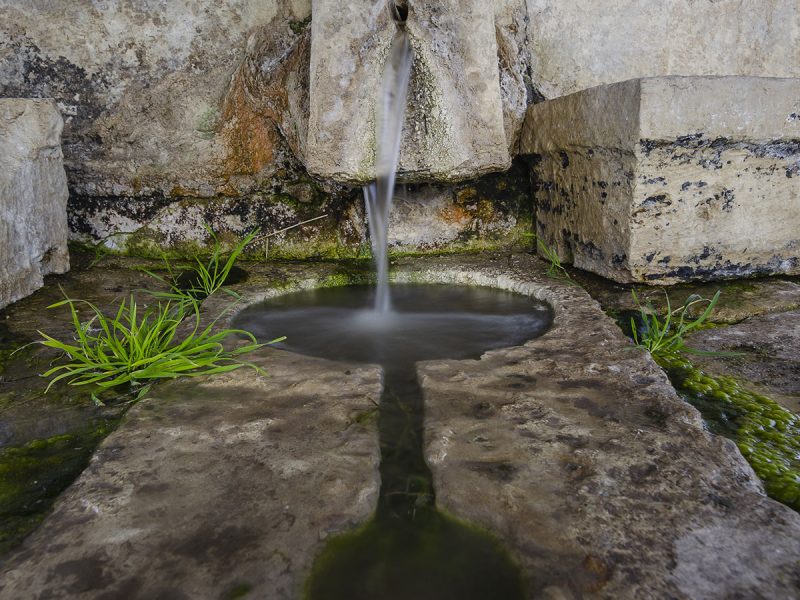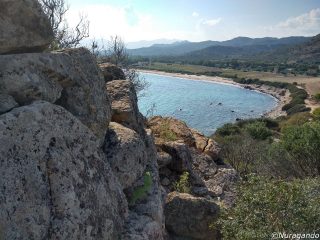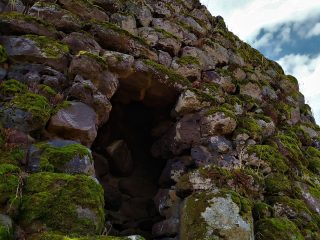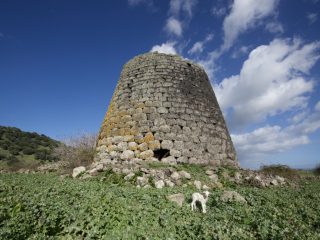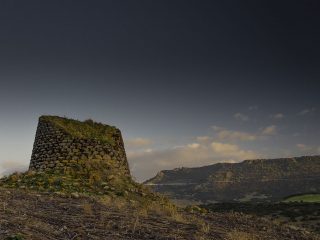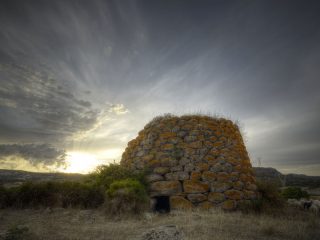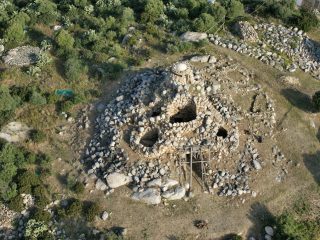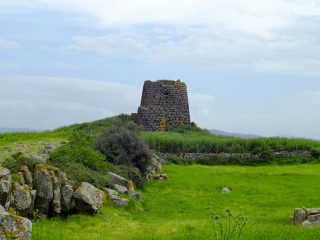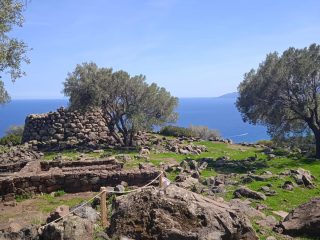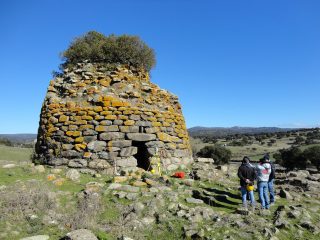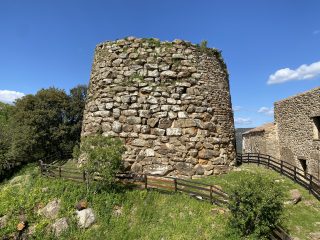The archaeological site of Irru, in the municipality of Nulvi, covers an extensive settlement including Nuraghes, a village, burials and a holy well.
The latter is produced in finely processed limestone, and is particularly large: 16 metres in length by 7.5 metres in width. It is made up of three units: the actual well, perfectly circular and preceded by a small vestibule; a first atrium with moderate paving compromised by the search for water in the 1980s; a second atrium, with rectangular layout and larger measurements, it too paved, located at a lower height of around half a metre compared to the first one.
The well, with no stairway and originally with tholos roof, was produced in isodomum and involves twelve perfectly square and smooth conical stones. A groove carved on the vestibule floor and overflow function, makes it easier for the water to exit the well and direct it into a gutter which crosses the entire monument, until it flows outside. The temple’s main facade with “dovetail” ashlars which show, on the visible facade, an “ashlar” decoration is particularly noteworthy. The sophisticate building technique shows significant similarities to the Predio Canopoli holy well and the Niedda a Perfugas holy spring. At the centre of two excavation digs between 1991-1992, the site was populated between the Nuragic age and the Byzantine period.
Leaving from Nulvi, take the trunk road SS 127 towards Martis, then turn right after about 5 kilometres, following the road signs. After a kilometre of dirt track, you’ll come to the Irru archaeological site.


